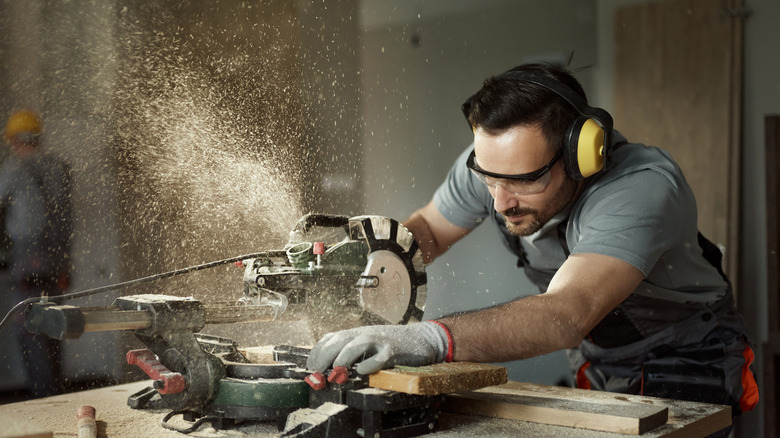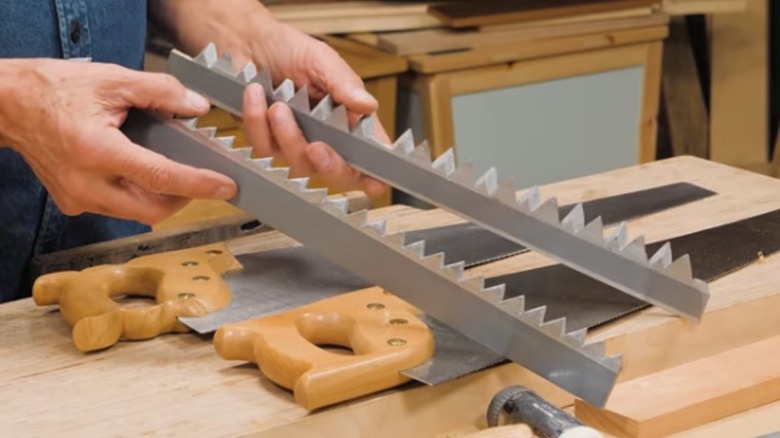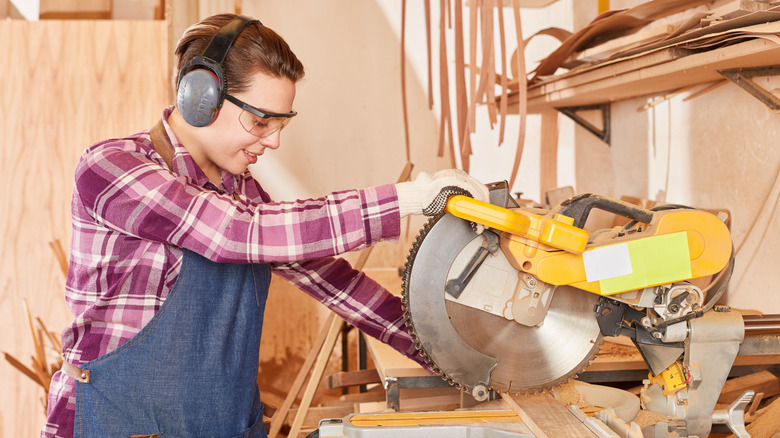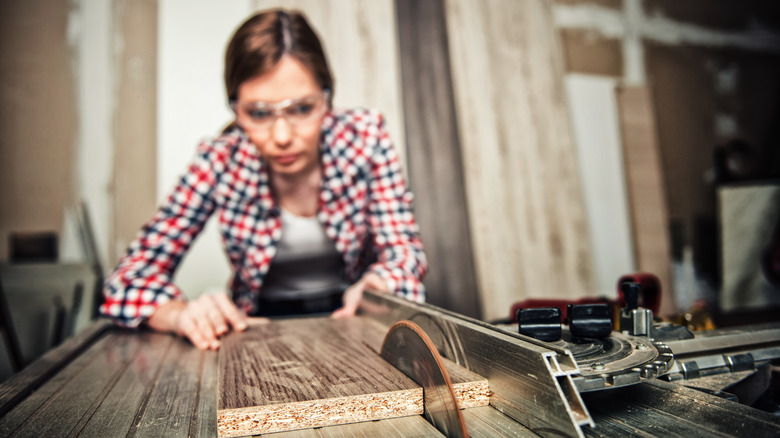Crosscut Saw Vs. Rip-Cut Saw: How To Pick The Right Tool For The Job
One of the first things you have to do when you get into a woodworking project is figure out the tools you'll need. There are a lot of different kinds of power saws out there, and each of them specializes in making different kinds of cuts, so it pays to know what tool is best suited for the job. Most of them, like table and circular saws, involve cutting in straight lines. Some, like the jigsaw and band saw, can make curved, circular, and wavy cuts. Even amongst these different tools, however, different kinds of saw blades are designed for different kinds of cuts. These blades are also usable on tools across all brands, so it pays to know what kind of blades you're looking for, whether you're getting your woodworking tools from Milwaukee or Ryobi.
When it comes to straight-cutting tools for woodworking, there are two major kinds of saw blades. There are crosscut saws and rip-cut saws. This applies to hand tools as well. There are also general-purpose and combination blades that are designed to do both. These are good for construction-grade work that doesn't need super smooth edges, but the cuts these blades make can be a little rough when compared to the ones made by specialized blades. That's why most furniture-grade woodworkers prefer using crosscut and rip-cut blades for each cut as needed. This can be confusing for new DIYers. Here's a quick breakdown of the difference between a crosscut and a rip-cut saw and how to pick the right one for your project.
Crosscut vs. rip-cut
A wooden board might look like a homogeneously solid material at a glance, but it's actually made up of thousands of tightly packed strands of wooden fibers that are all running in a single direction. These fibers grow vertically within the tree, so boards cut from felled timber typically have the fibers, or grain, running in the same direction as the length of the board. If you look at the end of a board, you'll actually be able to see the ends of these fibers in what is called the end grain. Even plywood has a grain on its surface veneer that you will want to be mindful of before choosing the saw to make your cuts.
A rip-cut is a cut performed in the same direction as the grain. This is easier to do since it involves the blade traveling in the same direction as the fibers, so rip-cut saws tend to have thinner blades and smaller, more evenly distributed teeth. These cut cleaner and remove less material.
A crosscut, sometimes called a miter cut, is performed against the grain. This requires a thicker blade kerf with larger, more jaggedly distributed teeth designed to sever the fibers as they cut across the grain, creating a new end grain. All power saws can technically perform both of these cuts, but most tools are better at performing one kind over another.
When to use a crosscut saw
Most projects will probably require the use of both rip-cuts and crosscuts at some point, but there are certainly times when you'll need one more than the other. As mentioned above, a crosscut blade is needed whenever cutting across the grain. This means that you will need a crosscut blade whenever you cut boards to length, so it will most often be used in projects that involve breaking a long piece of wood into several shorter pieces. Any curved or angular cuts will also be crosscuts since anything that isn't perfectly in line with the grain will need to sever the fibers of the wood. So, building boxes, cutting frames, and building furniture with angled joints will all require a crosscut blade.
Most power saws are capable of using crosscut blades. Miter and chop saws are almost exclusively used for mitered cuts and, therefore, nearly always use crosscut blades. This is an ideal tool for quickly and easily chopping pine 2"x4"s and other thinner boards to length. They're also exceptional tools for getting perfectly angled cuts for corner joints.
You will probably need a circular or table saw with a crosscut blade installed for wider boards. A table saw requires a miter gauge or a sled to make crosscuts. Meanwhile, you may wish to clamp a fence to your board when crosscutting with a circular saw to keep the cut perfectly straight.
When to use a rip-cut saw
The directionality of rip-cut blades is more restrictive, so you will probably use them much less often than crosscut blades. That said, you're still likely going to have to make a few of them over the course of any given project.
Since you make a rip-cut any time you cut with the grain of the wood, you're typically going to want a rip-cut blade when trimming the edges off longer boards to get a desired width. A table saw with a good fence is usually the best tool. You can swap out the blade, set the fence to your desired width, and then simply run the board along it with the end grain feeding straight into the saw. This is usually done before making crosscuts to keep the width of the final pieces perfectly uniform.
There are occasions where a table saw might not be ideal, though. For instance, breaking down large sheets of plywood is difficult and dangerous to do on a table saw. A circular saw with a guide will do much better in these situations. While you can also technically make rip-cuts with a jigsaw or bandsaw, this is much less common. Unlike crosscuts, rip-cuts are always straight, and so there is usually a tool that is better suited to the cut.



